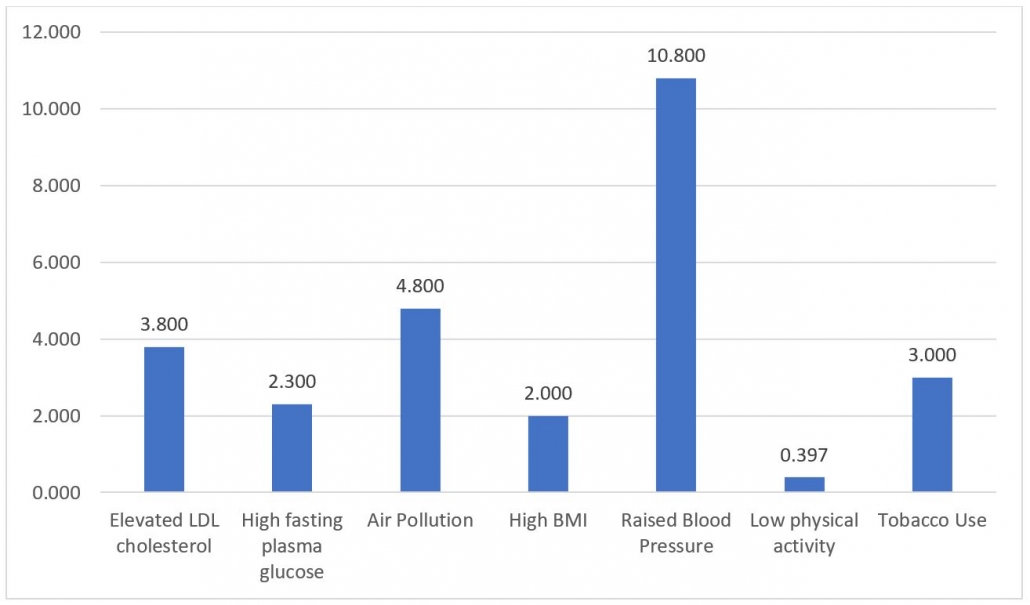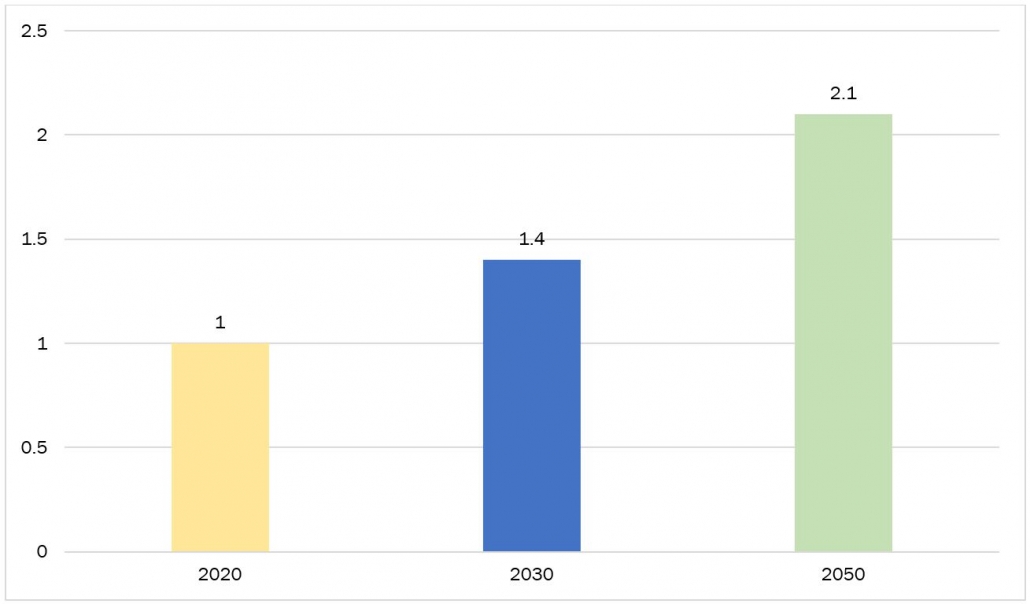AI to Levitate the MRI in Healthcare Industry
Artificial Intelligence (AI) has shown a massive increase in growth during the past two years, coupled with the increasing adoption and development of automation and technology worldwide for a wide variety of applications in healthcare, food and beverage, construction, and many other industries. AI can be defined as the process of simulating human intelligence through the use of machines, specifically computer systems. This process allows the encapsulation of processes like learning, self-correction, and reasoning through the use of code and machinery. AI is known to have different technological facets, which include:
- Automation and Robotic Process Automation (RPA): Aids in the execution of high-volume, repetitive tasks, augmenting efficiency, and freeing human resources for intricate tasks.
- Machine Learning and Deep Learning: Enables computers to learn from data through Machine Learning (ML) and allows for the implementation of predictive analysis through neural networks through the use of Deep Learning (DL).
- Machine and Computer Vision: Empowers machinery to interpret visual information.
- Natural Learning Processing (NLP): Enables machinery to understand and respond to human language. Examples include GPT-4 by OpenAI.
- Robotics: Allows the integration of ML and computer vision to build robots that are capable of performing complex tasks such as manufacturing, healthcare, and space exploration.
AI is known to have a wide range of applications, which includes healthcare, business, education, finance, law, and manufacturing. In the healthcare sector, the use of AI technology has shown an increase in MRI technologies. MRI scanners are known to be medical imaging machinery that uses magnetic fields and radio waves to take pictures of the body’s interior. It is commonly known to be helpful for the collection of pictures of soft tissue, such as organs and muscles, that are not visible through X-ray scans.
The increasing prevalence of brain and heart diseases propels the MRI scanning technology growth.
Magnetic Resonance Imaging (MRI) technology is known to be used to scan the inside of the body, commonly soft tissue such as muscles and organs. It is commonly used in the healthcare sector for scanning various conditions in the body, which include tumours such as cancers, soft tissue injuries such as damaged ligaments, joint injury or disease, spinal injury or disease, and injuries or disease of internal organs, which include brain, heart, and digestive organs. The increase in the prevalence of health conditions that affect the internal organs of the body gives rise to an increasing need for improved MRI technology in the market.
AI usage in MRI technology allows for a wide range of benefits, helping improve the productivity and efficiency of MRI scans in the healthcare sector. The benefits include improved reconstruction, quicker diagnosis, and enhanced fault detection. AI enables the reconstruction of rapid MRI scans that are coarsely sampled into high-quality images, which further helps doctors interpret MRI scans more accurately. AI also helps doctors by providing detailed summaries and information on the diagnosis, helping doctors to create better results and decisions. AI is also known for improving fault detection through advanced algorithms and machine learning technologies.
One of the major growth drives of MRI scans in the market is the increasing prevalence of brain and heart disease in the world. For instance, as per the American Heart Federation, the number of people affected by Alzheimer’s disease and related dementias is expected to increase to 9.3 million in the United States by 2060, which will be a significant increase from 2.9 million in 2017.
Additionally, some of the leading factors that lead to an increasing prevalence of cardiovascular disease (CVD) deaths in 2021 include elevated LDL cholesterol (3.8 million deaths), high fasting plasma glucose (2.3 million deaths), air population (4.8 million deaths), high body-mass index (BMI) (2.0 million deaths), tobacco use (3.0 million deaths), low physical activity (397,000 deaths), and raised blood pressure (10.8 million deaths). The increased death rate of CVDs will drive the need for improved and enhanced MRI devices, which include AI-integrated MRI devices, to help prevent CVDs and other internal organ-related diseases or injuries from ever occurring.
Figure 1: Factors Contributing to Cvd Deaths, Global, 2021

(in millions of people)
Source: World Heart Report, World Heart Federation
Another factor that leads to the increasing prevalence of heart and brain diseases in the market is the increasing aged population worldwide. Aging is one of the major factors that propel the increasing risk factor of heart and brain diseases, which include coronary heart disease, Alzheimer’s disease, Amyotrophic lateral sclerosis (ALS) disease, and many others. The increase in the number of elderly people will increase the need for improved healthcare facilities and technologies, which include MRI devices. AI in MRI devices will help improve the diagnosis through efficiency and improved information collection and production. The World Health Organization states that the number of people aged 60 years and above will account for 1 in 6 people by 2030. It was also stated that the global population of those who are aged 60 years and above will account for an increase from 1 billion in 2020 to 1.4 billion by 2030, which will be expected to double in size to 2.1 billion by 2050. It was also stated that the number of people aged 80 years and above will be expected to triple to reach 426 million by 2050. The increase in the global aged population will lead to an increased prevalence of heart and brain diseases or injuries, further driving the need for MRI devices or scanners in the healthcare sector, coupled with developing technologies such as artificial intelligence integrated into the machinery, helping prevent diseases before occurring or increasing in risk in the human body.
Figure 2: Projected Aged Population Growth, Global, by Billion, 2020-2050

(in billions of people)
Source: World Health Organization
Key Developments:
August 2023: Fujifilm announced the launch of their new MRI system that consists of Deep Learning Reconstruction technology, dubbed ECHELON Synergy. The 1.5 Tesla magnetic resonance imaging (MRI) system employs Synergy DLR, which is Fujifilm’s proprietary Deep Learning Reconstruction (DLR) technology that is powered by AI, that enhances the sharpness of images and produces scans faster, contributing to a higher throughput, image quality, and patient satisfaction.
July 2022: Siemens Healthineers announced the acceleration and improvement of their Magnetic Resonance Imaging (MRI) with artificial intelligence, dubbed Deep Resolve. This deep learning solution for image reconstruction removes the dilemma of the trade-off between scan time, resolution, and image noise of MRI scans. This improved the efficiency and productivity of MRI scanners by allowing clinicians to choose a significantly faster scan time, further reducing noise and maintaining the resolution or even improving the image quality. The solution works with the scanner’s raw data to use AI algorithms, improving the image from the first steps of image reconstruction.



